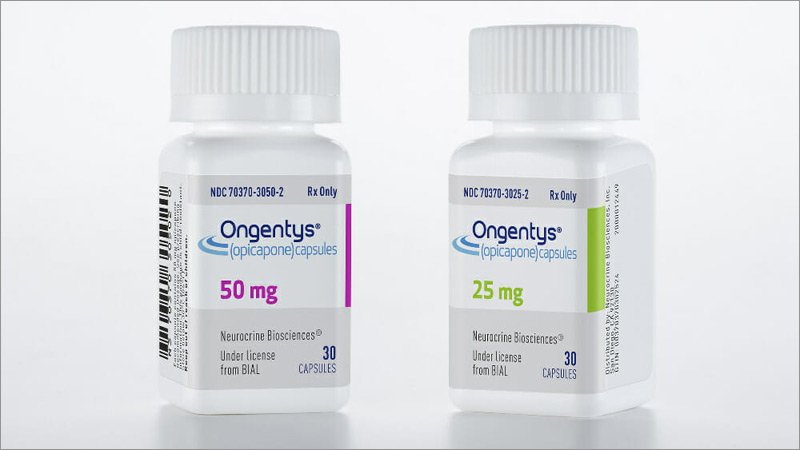Opicapone, New medication for Parkinson’s Disease got FDA approval
Opicapone, got FDA approval for Parkinson’s Disease Treatment
Parkinson’s disease treatment got a new drug for its management. Opicapone a newer once a day medication helps in better functioning of levodopa/carbidopa (Syndopa / LCD / Madopar / Sinemet). It got Food and Drug Administration (FDA) of USA approval under the brand name of ONGENTYS. It comes with 25mg and 50mg capsules. It helps to treatment and improvement of ON periods in Parkinson’s disease. The company Neurocrine Biosciences plans to launch ONGENTYS later this year.
Opicapone blocks the enzyme catechol-O-methyltransferase (COMT) effectively (>90% at therapeutic doses), selectively and reversibly, and only outside the central nervous system. It dissociates slowly from COMT, resulting in a duration of action longer than 24 hours despite its short blood plasma half-life. As COMT and DOPA decarboxylase are the main enzymes for degrading levodopa, blocking the two effectively increases its concentrations in the bloodstream. More levodopa reaches the brain, where it is activated to dopamine. This helps to improve the symptoms of Parkinson’s disease, such as stiffness and slowness of movement.In June 2016, it was authorised for use in the European Union. It was authorised for use in the United States in April 2020.
This drug is contraindicated in people with cancers that secrete catecholamines (for example epinephrine), such as phaeochromocytoma or paraganglioma, because as a COMT inhibitor it blocks catecholamine degradation. Other contraindications are a history of neuroleptic malignant syndrome (NMS) or non-traumatic rhabdomyolysis, and combination with monoamine oxidase inhibitors that are not used as antiparkinsonians, because of possible drug interactions
People taking opicapone very commonly (18%) experience dyskinesia. Other common side effects (in 1 to 10% of patients) include dizziness, strange dreams, hallucinations, constipation, dry mouth, orthostatic hypotension (low blood pressure), and muscle spasms. Apart from spasms, these side effects are also known from tolcapone and entacapone







